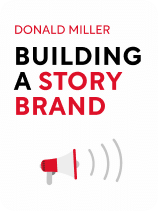

This article is an excerpt from the Shortform book guide to "Building a Storybrand" by Donald Miller. Shortform has the world's best summaries and analyses of books you should be reading.
Like this article? Sign up for a free trial here .
Do you want to know how to get people’s attention in a marketing campaign? What do you have to do to break through the clutter?
All marketers are looking for new ways to figure out how to get people’s attention. Traditional marketing often fails at breaking through the clutter and achieving its goals.
Keep reading to find out how to get people’s attention.
How to Get People’s Attention
To figure out how to get people’s attention, you need to cater to how it works. Therefore, your marketing needs to both:
- Frame the message as survival-related.
- Keep the message simple and easy to digest.
Frame the Message as Survival-Related
There are several ways to frame your offerings around survival. Show your customers that your product or service will help them. This is how to get people’s attention:
- Save or acquire money and resources. Money helps us survive because we use it to buy resources such as nourishment.
- For example, Walmart’s tagline is “Save Money. Live Better,” which not only tells a customer that she’ll save money, but that saving will improve her life.
- Save time. Time helps us survive because, like money, we use it to acquire other resources.
- (Shortform example: If a powerful vacuum helps you clean your house faster, you’ll have more time to spend with your family and friends and develop your tribe.)
- Build community. Community helps us survive because: 1) being part of a tribe gives us automatic allies and 2) being nurtured and nurturing meets the need for meaning—nurturing gives our lives purpose.
- Acquire status. Status helps us survive because it scares off enemies and attracts allies and mates.
- For example, having a high-status car such as a Mercedes might help you get a date.
- Create opportunities to be generous. Being generous helps us survive because: 1) it makes us more likable, which increases our ability to form relationships, and 2) helping others gives our lives meaning
- Find meaning. Meaning is one of our fundamental survival needs, and a brand can offer it directly by giving customers the opportunity to make the world a better place. (When we lack meaning, we distract ourselves with pleasure, which isn’t always conducive to survival—if we always choose to play instead of work, we won’t earn the money to buy the resources we need to survive.)
- (Shortform example: Buying a product from a company that gives 1% of its profits to environmental causes makes us feel like we’re helping the world.)
Keep the Message Simple and Easy to Digest by Telling a Story
Story is one of the most simple and digestible ways to transmit information and learn how to get people’s attention, because it organizes information into a predictable, formulaic format that both 1) doesn’t take very much energy to understand and that 2) holds an audience’s attention. Neuroscientists discovered that people daydream more than 30% of the time, except when they’re engrossed in a story.
The author has encountered people who think storytelling is fanciful or impractical. This isn’t the case—storytelling is a concrete formula that’s as valid as any management or manufacturing formula.
To understand why stories communicate so well, consider the difference between music and noise. Both are sound, but music is organized and follows certain rules. This allows the brain to more easily retain it. For example, if you listened to shoes bouncing around in a dryer, you wouldn’t remember the sounds, but if you listened to the latest pop song, it would probably get stuck in your head. Music is like story—it puts random information into a structure that aids comprehension.
We’ll cover how to create your story in Part 2.
Clear Communication Always Triumphs
Brands that communicate the clearest are the ones that succeed, whether or not they have the best products or leadership. Her are some examples of how to get people’s attention.
For example, Apple became successful only after it started using a storytelling approach. In 1983, when Steve Jobs helped release a computer called Lisa, he took out a nine-page newspaper ad that talked about Lisa’s technical specifications. No one understood it, no one cared, and Lisa failed.
Jobs went to work for Pixar, a company whose entire business revolves around story. Jobs picked up a few things, and when he returned to Apple, his first campaign was only two words: “Think Different.” Apple made their advertising about the customer and what she could do with a computer, rather than about the computer itself.
Apple’s computers and phones probably aren’t the best technology the world has to offer. However, Apple is the best at making people understand what they’re selling, so they’re a very successful company.

———End of Preview———
Like what you just read? Read the rest of the world's best book summary and analysis of Donald Miller's "Building a Storybrand" at Shortform .
Here's what you'll find in our full Building a Storybrand summary :
- How storytelling enhances brand marketing
- Why you should make the consumer the hero of your brand's story
- The 7 elements that make marketing work






